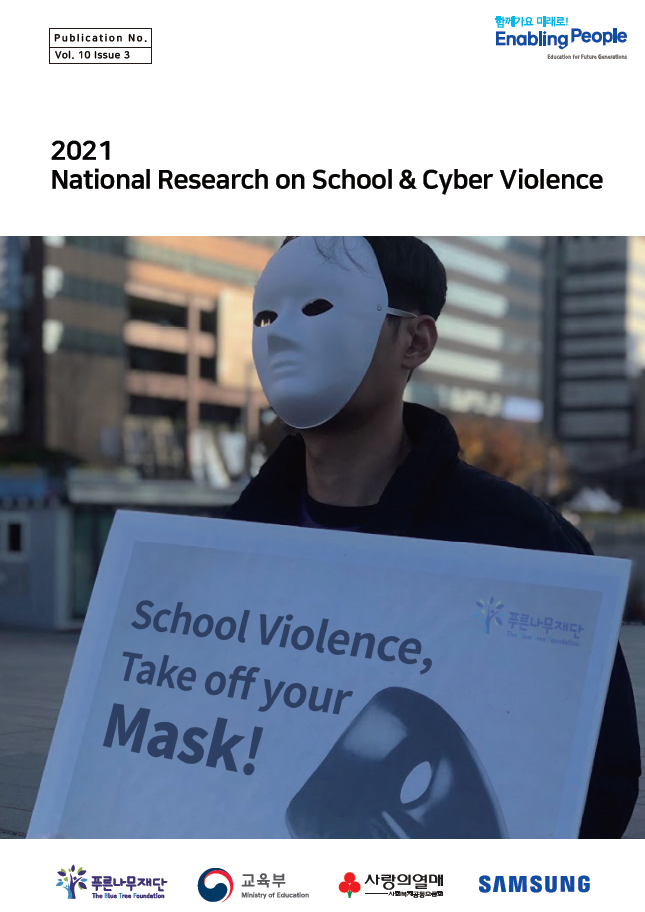
Publisher
▶ Publisher : The Blue Tree Foundation
▶ Publish date : April, 2021
▶ Address: ChungYeDan Building, 88, Seocho-daero 46-gil, Seocho-gu, Seoul, Republic of Korea
▶ Tel: +82-2-585-0098, +82-2-598-1640
▶ Counseling number: 1588-9128
▶ F A X: +82-2-585-0038, +82-2-6952-1641
▶ HOMEPAGE : www.btf.or.kr
▶ ISBN : 979-11-970076-9-9
▶ Size : 21cm*29.6cm
▶ Page : 32 pages excluding table of contents
Introduction
Since 2001, the Blue Tree Foundation has found out the current status of school violence for the first time in South Korea through a study of the National School Violence Survey. It informed the civil society of basic data on school violence. The <2021 National Research on School Violence and Cyber Violence> is the 20th result of the Blue Tree Foundation and interviewed 6,230 students (from 2nd grade in elementary school to 2nd grade in high school) across the country.
The purpose of this research is to closely understand the current state of school violence and cyber violence among elementary, middle and high school students in South Korea. Furthermore, based on these results, it is to seek proper diagnosis and practical tasks for school violence.
<Purpose of the Research>
· To identify the current status of damage, assault, sightings, bystanders and perceptions of school and cyber violence among students nationwide in 2020
· To searche for the damage types that threaten cyber youth safety, in addition to cyber violence
· To reveal the current status and characteristics of cyber violence in schools in three dimensions, using both quantitative and qualitative research methods
· To conduct three-dimensional and hypothetical study by identifying the prosocial capabilities, media usage status, parental media supervision, subculture of violence, coping methods, and supporting resources of the survey
· To propose proposals for prevention and resolution of school violence and cyber violence policies
Table of Contents
Ⅰ. Main Findings ① : Current Situation of School Violence
Ⅱ. Main Findings ② : Cyber Violence Virus Spread to Empty Classroom
Ⅲ. Overview
Ⅳ. Conclusion
Ⅴ. Appendix
.png)
.png)
.png)